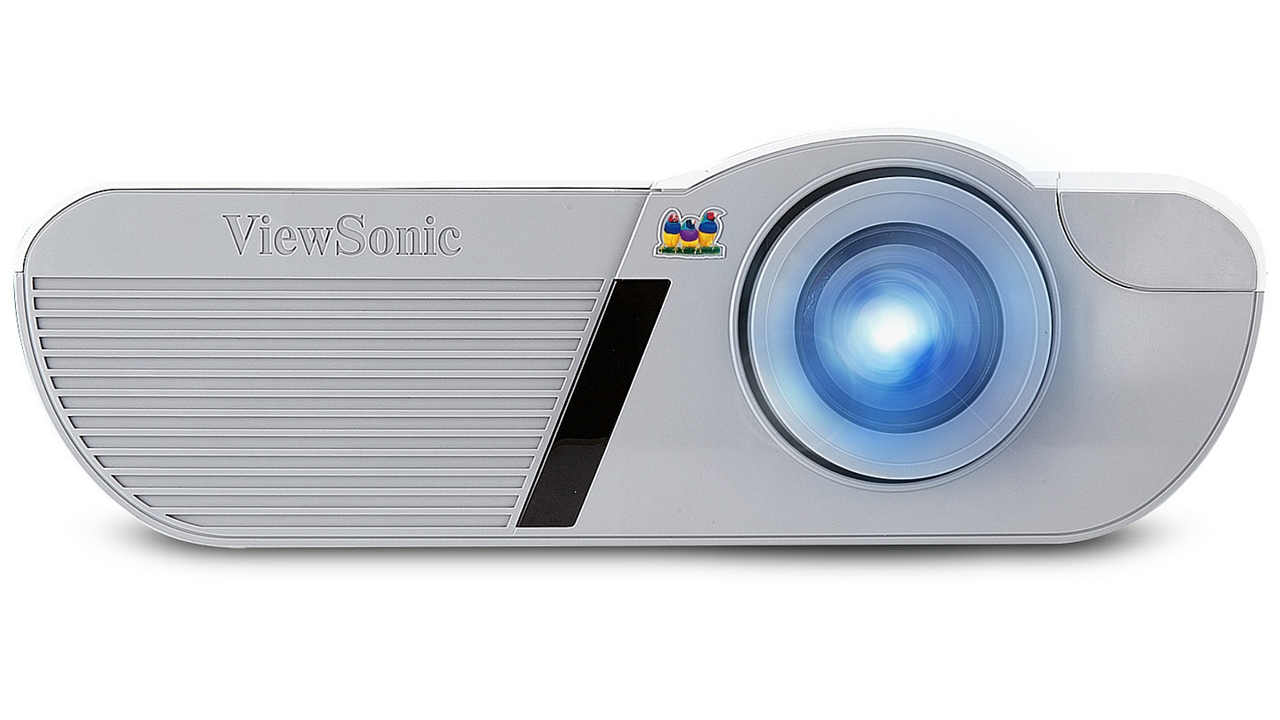Why you can trust TechRadar
When it comes to these sort of price-sensitive (read: budget-focused) projectors it's almost always about compromise. Something's got to give.
And in the pursuit for versatility, as the beamer you can bring home from the office when the day's at an end, this ViewSonic projector's home cinema credentials suffer in a blackout.
But if you want to bag a beamer that's the perfect home cinema beamer and versatile enough for business use, AND comes in at this sort of price point, you're going to be looking for an awfully long time.

We liked
While it's reasonably quiet during operation if you use it on anything less than full brightness, the PJD7830HDL is simultaneously the loudest projector I've ever heard thanks to its unique 16W built-in speaker. If that gives it useful versatility, so does its lightweight design and the provision in the box of a handy carry bag that comes complete with shoulder strap and a pocket for a laptop and/or cables.
Yet another selling point is the PJD7830HDL's lamp life, which is quoted at an impressive 4,000 hours in normal lamp mode. However, those who can manage a blackout – and therefore can run the PJD7830HDL in Dynamic Eco mode (which is also the best choice for picture quality when the curtains are closed) – will more than double the life of the lamp to 10,000 hours. That should do for a decade or so.
The red pointer on the remote control is yet another fantastic idea that anyone planning on using the PJD7830HDL for the odd presentation – or as a a handy cat toy/tormentor – will love.
We disliked
The PJD7830HDL might be full of surprises, but it's far from perfect.
Sign up for breaking news, reviews, opinion, top tech deals, and more.
As well as the so-so black levels, it takes a hefty 10 seconds or so to swap audio tracks when changing inputs. Also very laggy is the zoom function, which magnifies to an impressive 1.8x, though only via a long wait between each of the eight steps, making that feature virtually unusable.
It may have a red light, but the remote control is otherwise small and fiddly, with the navigational keypad at its centre automatically tuned to alter the keystone instead of the speaker's volume. Controlling the latter requires the pressing of an audio mode button first, which is needlessly long-winded.
However, the PJD7830HDL's real issue for me is rainbow effect, which I noticed across the screen fairly frequently during my review.
Unfortunately that's almost always the risk with single-chip DLP projectors, though if you're not susceptible to rainbows (some eyes are not), go ahead and ignore that particular criticism.
Verdict
Forget the PJD7830HDL's lacklustre blackout performance; anyone interested in home cinema perfection will just have to pay more.
This cost-effective DLP all-rounder is firmly aimed at the use-it-anywhere crowd, which all projector makers must surely aim for to popularise the practice of watching truly big-screen movies and games.
In most regards, the PJD7830HDL does really well, with an excellent daytime image and speakers that deliver the finest audio performance from a projector yet. Add that low, low price and ViewSonic just came up with a bargain all-rounder that's hard to resist for anyone who wants a slice of the big picture.

Jamie is a freelance tech, travel and space journalist based in the UK. He’s been writing regularly for Techradar since it was launched in 2008 and also writes regularly for Forbes, The Telegraph, the South China Morning Post, Sky & Telescope and the Sky At Night magazine as well as other Future titles T3, Digital Camera World, All About Space and Space.com. He also edits two of his own websites, TravGear.com and WhenIsTheNextEclipse.com that reflect his obsession with travel gear and solar eclipse travel. He is the author of A Stargazing Program For Beginners (Springer, 2015),
